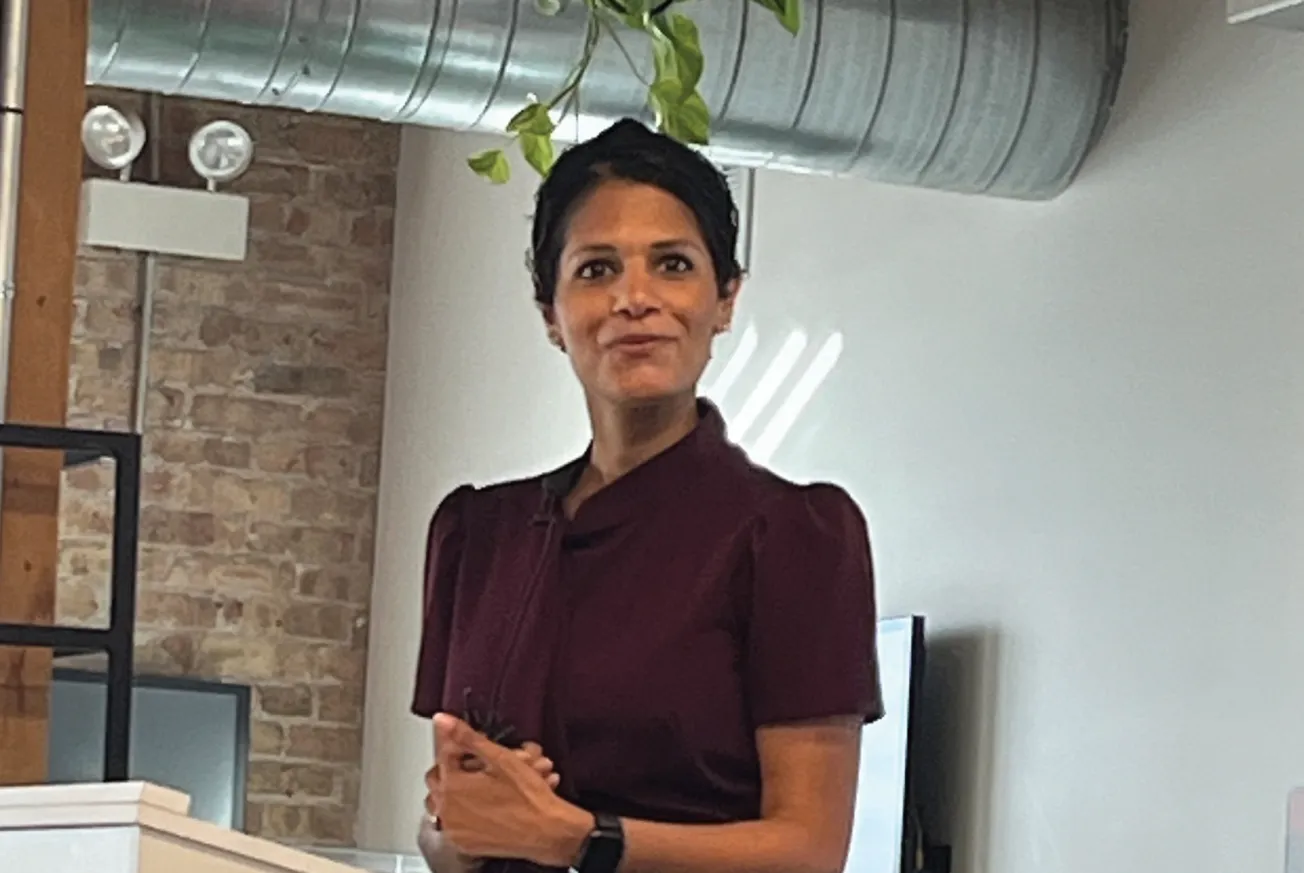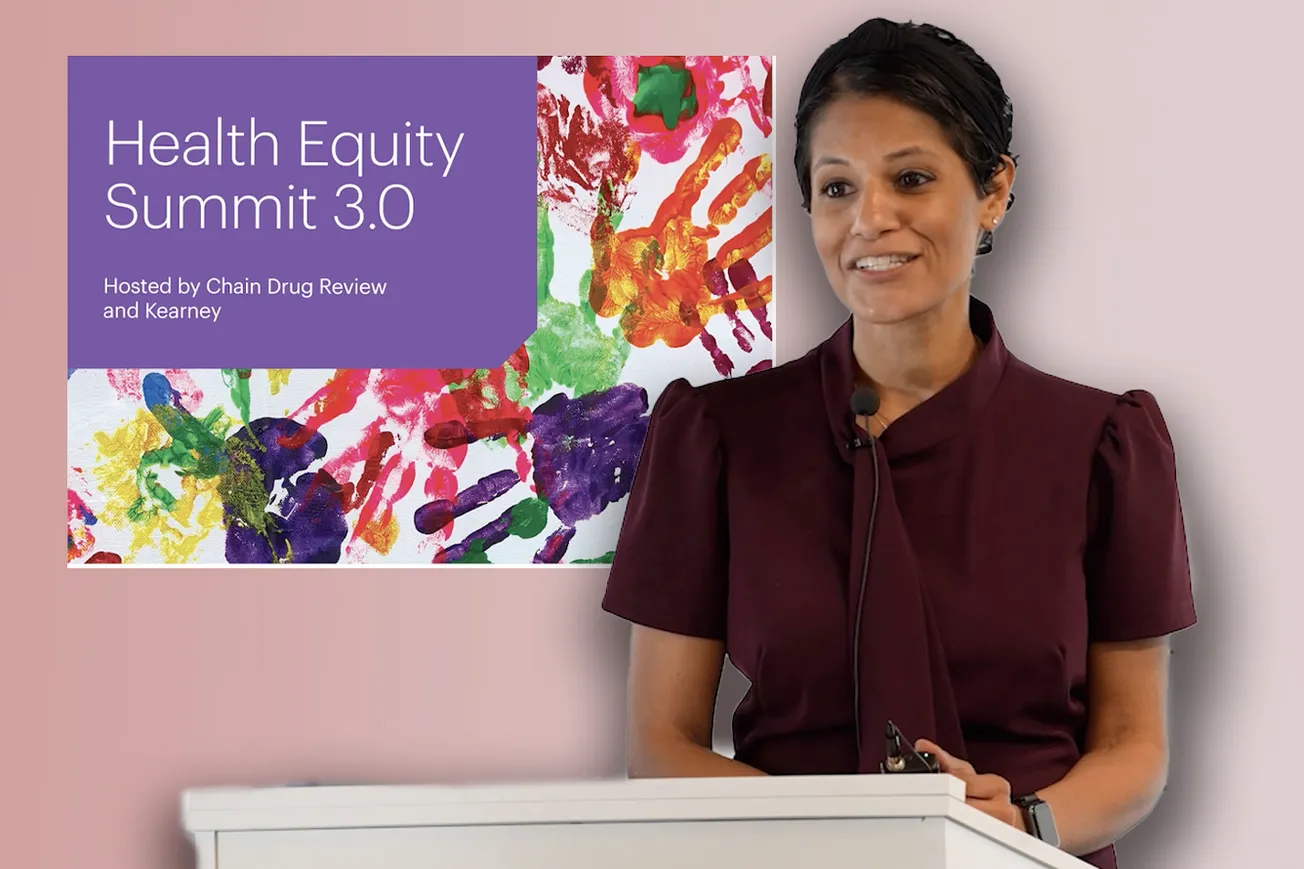While there is still a long road ahead before health equity becomes a reality in this country, the drive toward achieving it has gained considerable momentum in both the public and private sectors. Speakers at the third annual Health Equity Summit convened by Kearney and Chain Drug Review charted that progress, as well as the formidable challenges that remain.
In her keynote address, Rina Shah, senior vice president of pharmacy growth at Walgreens, described how health equity emerged as a central consideration in the drug chain’s strategic planning process and what that means going forward. The catalyst was COVID-19, which she said threw the disparities in access to quality care between affluent communities and underserved areas into sharp contrast. Walgreens established a health equity task force during the pandemic.
“We started looking at what it would take for our organization to start shifting the culture so that health equity was embedded in everything we did,” noted Shah, who first perceived the importance of the issue when her father, like her a pharmacist, had to close his independent drug store. “When we think of our core priorities and where we have seen success around health equity, it starts off with access, partnership and then education.
“Education is so critical to everything we do. The amount of distrust that is out there across different communities of color and the amount of education we need internally within corporate America are huge. There’s a lack of understanding of the impact and the value that health equity strategies bring to life, as well as a lack of understanding, even among health care professionals, of how you engage and how you deliver these types of programs. So, at the end of the day, education is how we bring it to life.”
Shah acknowledged the importance of the new health equity standard set by the Centers for Medicare and Medicaid Services, which took effect in 2023 and will begin to impact Star Ratings for providers in 2027. The new standard mandates that entities that help people in underserved communities do a better job managing chronic conditions receive a bonus in their Star Ratings. “From a business standpoint, it is a clear indication that if you are in the health care profession, you have to start thinking about health equity in some capacity to see how you can play a role,” Shah noted.
Although the CMS standard makes no mention of pharmacy or pharmacists, Shah asserted the new rule bodes well for members of the profession: “Pharmacy isn’t listed, the pharmacist isn’t listed, but that’s OK because everything that’s included is really talking to pharmacy. When you look at that, on the list of conditions that they actually are evaluating health plans for — it’s colon cancer, it’s diabetes, it’s heart disease. And it actually lists medication therapy management. Who does that? Pharmacy.
“It is a clear indication that the government is looking for private and public sector partnerships to drive health equity in the right way. And in doing so, by incentivizing the health plan, there’ll be action and innovation happening across the board.”
The trends identified by Shah were evident in research across the health care ecosystem conducted by Kearney. Challenges most relevant to pharmacy include medication access and affordability, according to MyMai Yungrattanachai, a consultant at Kearney.
“We know also that drug shortages are a national issue really threatening the resilience of the health systems in the U.S., and ensuring that there is that availability of treatment for folks that need it.”
Every problem spurs a quest for a solution. She cited Mark Cuban Cost Plus Drug Co. as one of the innovative disruptors in the pharmacy space. More broadly, Kearney’s research identified three overriding trends.
“We heard many wonderful ideas and efforts and market offerings within the health equity space,” Yungrattanachai noted. “These are the three that came up repeatedly. They include a lot of conversation around value-based care. What we’re hearing a lot is around utilizing ACOs (accountable care organizations); secondly, leveraging social determinants of health data; and third and importantly, increasing focus on women’s health. For utilizing accountable care organizations, I think this is really housed in the conversation of value-based care, and that’s really thinking about moving health systems from a volume-based payment model to a value-based payment model.”
In the coming weeks, Chain Drug Review will offer additional coverage of Health Equity 3.0, including insights from panel discussions about women’s health and pharmacy and food deserts.







